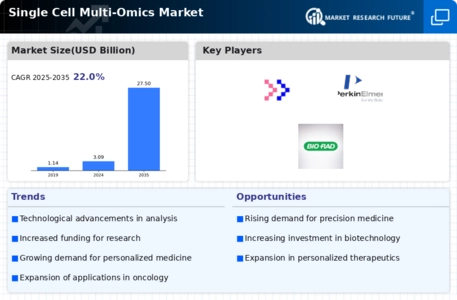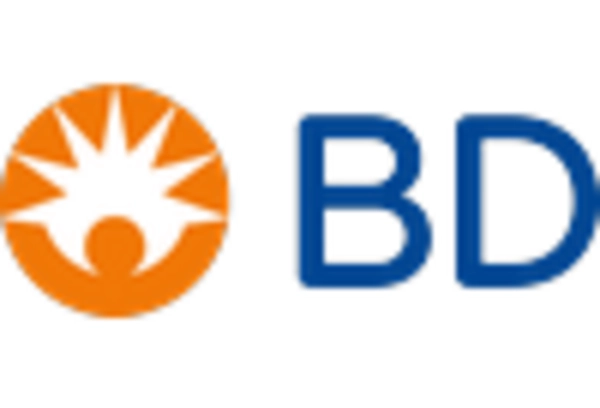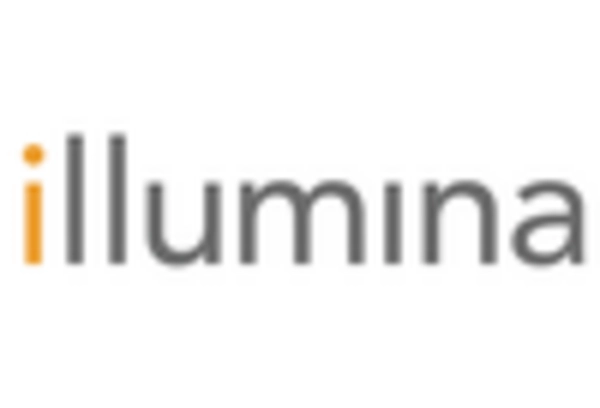Increased Funding and Investment
The Single Cell Multi-Omics Market is witnessing increased funding and investment from both public and private sectors. Government grants and venture capital investments are being directed towards research and development in this field, recognizing its potential to transform biomedical research. In recent years, funding for single-cell technologies has surged, with estimates suggesting an increase of over 20% annually. This influx of capital is enabling researchers to explore novel applications and improve existing technologies, thereby enhancing the overall market landscape. Additionally, the rise of start-ups focused on single-cell multi-omics solutions is indicative of the growing interest and potential in this area. As funding continues to flow, the Single Cell Multi-Omics Market is likely to experience accelerated growth and innovation.
Rising Applications in Healthcare
The applications of single-cell multi-omics in healthcare are expanding, which is a key driver for the Single Cell Multi-Omics Market. Researchers are increasingly utilizing these techniques to understand complex diseases, such as cancer and autoimmune disorders, at a cellular level. For instance, the ability to profile tumor microenvironments and immune responses is revolutionizing cancer research and treatment strategies. The market is expected to witness a compound annual growth rate of 15% over the next five years, reflecting the growing interest from pharmaceutical companies and academic institutions. This trend indicates a shift towards more targeted therapies and personalized medicine, which are becoming essential in modern healthcare. As the understanding of disease mechanisms deepens, the demand for single-cell multi-omics technologies is likely to surge, further enhancing the Single Cell Multi-Omics Market.
Collaborative Research Initiatives
Collaborative research initiatives among academic institutions, biotechnology firms, and pharmaceutical companies are significantly influencing the Single Cell Multi-Omics Market. These partnerships facilitate the sharing of resources, expertise, and data, which accelerates the development of innovative solutions. For example, joint projects focusing on the application of single-cell multi-omics in drug discovery and development are gaining traction. Such collaborations not only enhance the research capabilities but also lead to the establishment of standardized protocols and best practices. The market is projected to benefit from these initiatives, as they are likely to lead to breakthroughs in understanding complex biological systems. As more organizations recognize the value of collaboration, the Single Cell Multi-Omics Market is expected to expand, driven by the collective efforts of diverse stakeholders.
Growing Demand for Personalized Medicine
The demand for personalized medicine is a significant driver of the Single Cell Multi-Omics Market. As healthcare shifts towards more individualized treatment approaches, the need for detailed cellular insights becomes paramount. Single-cell multi-omics technologies provide comprehensive data that can inform tailored therapeutic strategies, particularly in oncology and rare diseases. The market is anticipated to grow as healthcare providers increasingly adopt these technologies to enhance patient outcomes. Furthermore, regulatory bodies are beginning to recognize the importance of personalized medicine, which may lead to supportive policies and funding initiatives. This trend suggests that the Single Cell Multi-Omics Market will continue to expand, driven by the imperative to deliver more effective and customized healthcare solutions.
Technological Advancements in Single Cell Multi-Omics
The Single Cell Multi-Omics Market is experiencing rapid growth due to continuous technological advancements. Innovations in sequencing technologies, such as next-generation sequencing and single-cell RNA sequencing, have significantly enhanced the ability to analyze cellular heterogeneity. These advancements allow researchers to obtain comprehensive insights into cellular functions and interactions at an unprecedented resolution. The market is projected to reach USD 3.5 billion by 2026, driven by the increasing demand for precise and personalized medicine. Furthermore, the integration of artificial intelligence and machine learning in data analysis is streamlining workflows and improving the accuracy of results. As these technologies evolve, they are likely to unlock new applications in various fields, including oncology and immunology, thereby propelling the Single Cell Multi-Omics Market forward.


















Leave a Comment